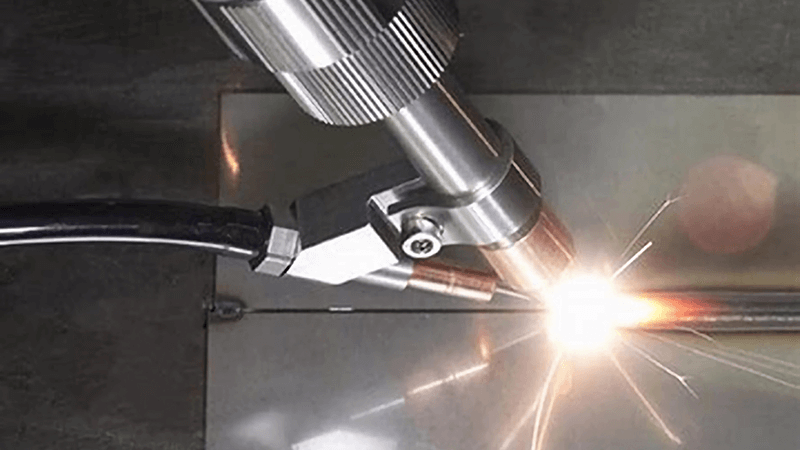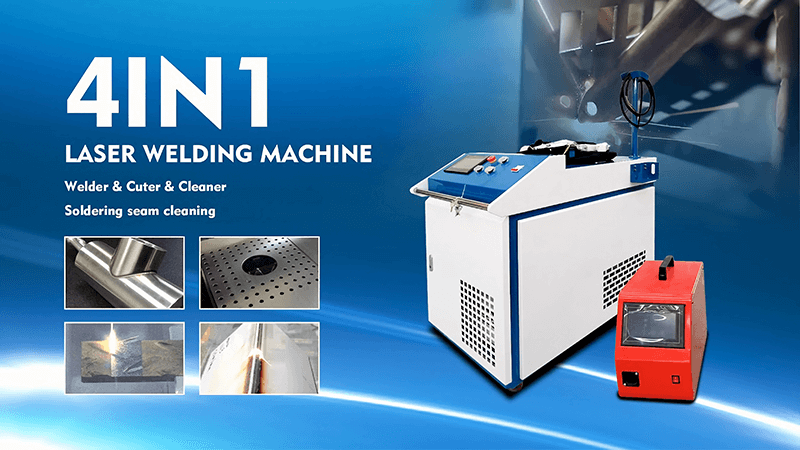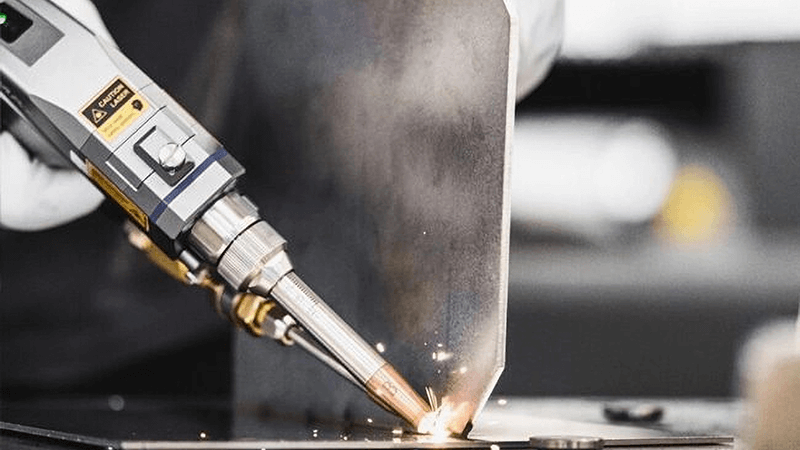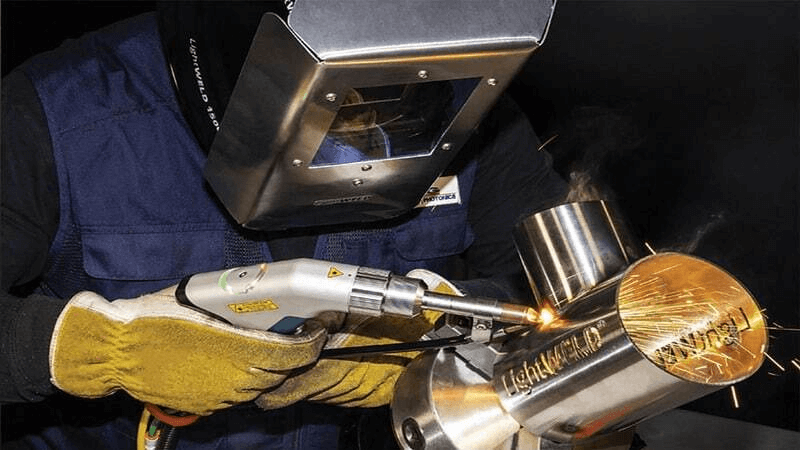When I talk to new buyers, I see the same pattern — they get lost in specs but forget what really matters: stable performance and solid after-sales.
A wholesale laser welding machine is more than just watts and price tags — it’s an investment that pays off only if you choose the right supplier, the right specs, and get the right support.
I’ve seen too many buyers focus on upfront cost and ignore the bigger picture. Let’s break it all down and keep you clear on what matters.

What is the price of a laser welding machine?
Many first-time buyers think they can guess a laser welding machine’s price from its power alone. But there’s much more at play.
The price of a laser welding machine depends on power, build quality, brand, and what’s included — handheld fiber laser welders from Kirin Laser range from around $1860 to $6200.
Why prices vary
I always remind buyers that power is just one piece. At Kirin Laser, our 1200W handheld fiber laser welding machine1 sells for $1860 to $2745. The 1500W model ranges from $2285 to $2935. If you want more power, the 2000W jumps to $2715 to $4720, and the 3000W can reach $4145 to $6200.
Power vs. Application
More power means thicker metal. But for thin stainless steel or mild steel, 1200W or 1500W is enough. Too much power can burn thin sheets. I always ask clients about their actual work — you don’t need a 3000W beast for 2mm stainless steel.
Build quality and core parts
Inside the machine, the laser source is the heart. A stable laser source2 makes or breaks your production. Cheaper options might save a few hundred dollars, but unstable sources cost more in downtime and bad welds. Our machines use tested fiber sources that keep you running.
| Power | Typical Price Range (USD) | Application |
|---|---|---|
| 1200W | $1860 - $2745 | Thin SS, MS |
| 1500W | $2285 - $2935 | Medium SS, MS |
| 2000W | $2715 - $4720 | Thicker metal, faster welding |
| 3000W | $4145 - $6200 | Heavy work, industrial use |
I always say: if you go cheap on the core parts, you pay later in rework and repairs.

What is the cost of a 1.5 kW laser welding machine?
Many buyers ask me for the sweet spot — 1.5 kW is the most popular size for small factories and metal shops.
At Kirin Laser, our 1.5 kW handheld fiber laser welding machine costs between $2285 and $2935, depending on configuration and accessories.
Why 1.5 kW laser welding machine is popular
1.5 kW is the middle ground. It handles mild steel, stainless steel, and aluminum sheets up to 3-4mm easily. It’s fast enough for batch work but doesn’t overheat thin workpieces.
What’s included in the cost
When I quote a price, I always tell clients to check what’s in the box. Our machines include the handheld gun, fiber source, water chiller, welding wire feeder if needed, plus training and support. Some suppliers strip out extras to look cheap on paper — watch out for that.
Case study: real results
I remember one customer who switched from old TIG welders. He was stuck with messy seams and slow polishing. With our 1.5 kW fiber laser welder3, his team doubled their output overnight. Clean seams, no blackening, less spatter — they finished more jobs with less rework.
| Machine | Price Range | Key Benefits |
|---|---|---|
| 1.5 kW Handheld Fiber Laser Welder | $2285 - $2935 | Clean seams, low spatter, good for thin to medium sheets |
Always ask your supplier for a clear list of what’s included — shipping, training, spare parts, after-sales — these add real value.

Is laser welding profitable?
Buyers often ask me if laser welding is worth it. My answer is simple: only if you use it right.
Laser welding can be highly profitable because it cuts down on labor, polishing, and rework. The key is matching the right machine with your workload and getting good training.
The real profit driver
Many shops switch from TIG or MIG to fiber laser welding4 to solve one pain point: speed and finish. Lasers weld faster with less heat distortion. The result is less time grinding or polishing seams.
Labor savings
I know a shop that ran four TIG machines to do what one laser welder now does. That’s three operators freed up for other work — that’s real savings.
Less scrap, better yield
A stable laser beam means fewer rejects. With TIG or MIG, you often see blow-through, spatter, or messy seams that need fixing. Every rework eats into your profit.
| Cost Factor | TIG/MIG Welding | Laser Welding |
|---|---|---|
| Speed | Moderate | Fast |
| Rework | Higher | Low |
| Labor | More | Less |
| Finish | Needs polishing | Often no polishing |
Where buyers lose money
Some buyers get a cheap machine with no local support. When it breaks, they wait weeks for parts. Downtime kills profit. That’s why I tell clients: check your supplier’s after-sales promise5. A good machine with bad service is still a bad deal.

Which is better MIG or laser welding?
This one comes up a lot. MIG is old-school, reliable, and cheap upfront. Laser welding is newer, faster, and cleaner.
Laser welding is better than MIG for clean seams, thin metal, less heat distortion, and faster finishing — but MIG can still win for thicker metal and simple jobs.
Comparing the two
MIG uses a wire and shielding gas to fuse metal. It’s cheap and simple but messy. Spatter is common, seams need polishing, and heat input is higher, so thin sheets can warp.
Laser welding6 uses a focused beam to melt the metal edges. Less heat means less distortion. The seam is cleaner, stronger, and often doesn’t need post-work.
What buyers choose
Shops that do thin stainless steel, signs, furniture, or kitchenware often switch to lasers. They need smooth, shiny seams. MIG is fine for construction work, thicker mild steel, or when looks don’t matter much.
| Factor | MIG Welding7 | Laser Welding |
|---|---|---|
| Speed | Moderate | Faster |
| Spatter | High | Very Low |
| Finish | Needs cleanup | Often no cleanup |
| Heat distortion | Higher | Low |
| Initial cost | Lower | Higher |
| Skill needed | Moderate | Easier to learn |
My take
If you weld thick steel frames all day and the seam won’t show, MIG might still be fine. But if you care about speed, looks, or polishing time, lasers win every time.
I always say: don’t look at power alone — look at stability and after-sales. A stable laser source saves you headaches and money in the long run.

Conclusion
Laser welding machines8 can transform how you work — but only if you choose wisely. From the right power to strong after-sales, it’s more than a price tag. At Kirin Laser, I’ve seen good machines double output and cut costs for buyers worldwide. If you plan smart, check specs honestly, and work with a supplier you trust, laser welding can be a solid profit driver for your shop.
-
Explore this link to understand the technology behind fiber laser welding machines and their applications. ↩
-
Learn why a stable laser source is crucial for quality welding and how it impacts production efficiency. ↩
-
Explore this link to understand how a 1.5 kW fiber laser welder can enhance your welding efficiency and quality. ↩
-
Explore the advantages of fiber laser welding to understand how it can enhance efficiency and reduce costs in your operations. ↩
-
Learn why a strong after-sales promise is crucial for minimizing downtime and maximizing your investment in machinery. ↩
-
Explore the benefits of laser welding for cleaner seams and less distortion, ideal for high-quality projects. ↩
-
Learn about the limitations of MIG welding, including spatter and heat distortion, to make informed choices. ↩
-
Know the best laser welding mahcine and laser welding solutions from Kirin Laser, clicking this link to get all your needs. ↩





